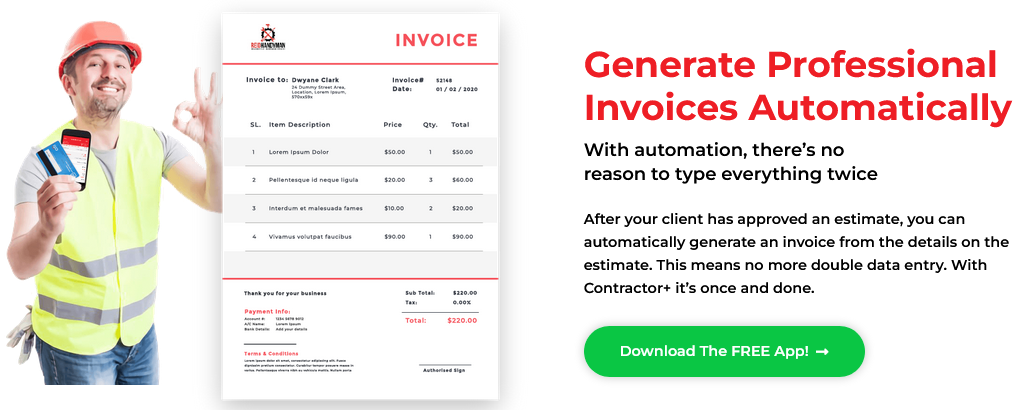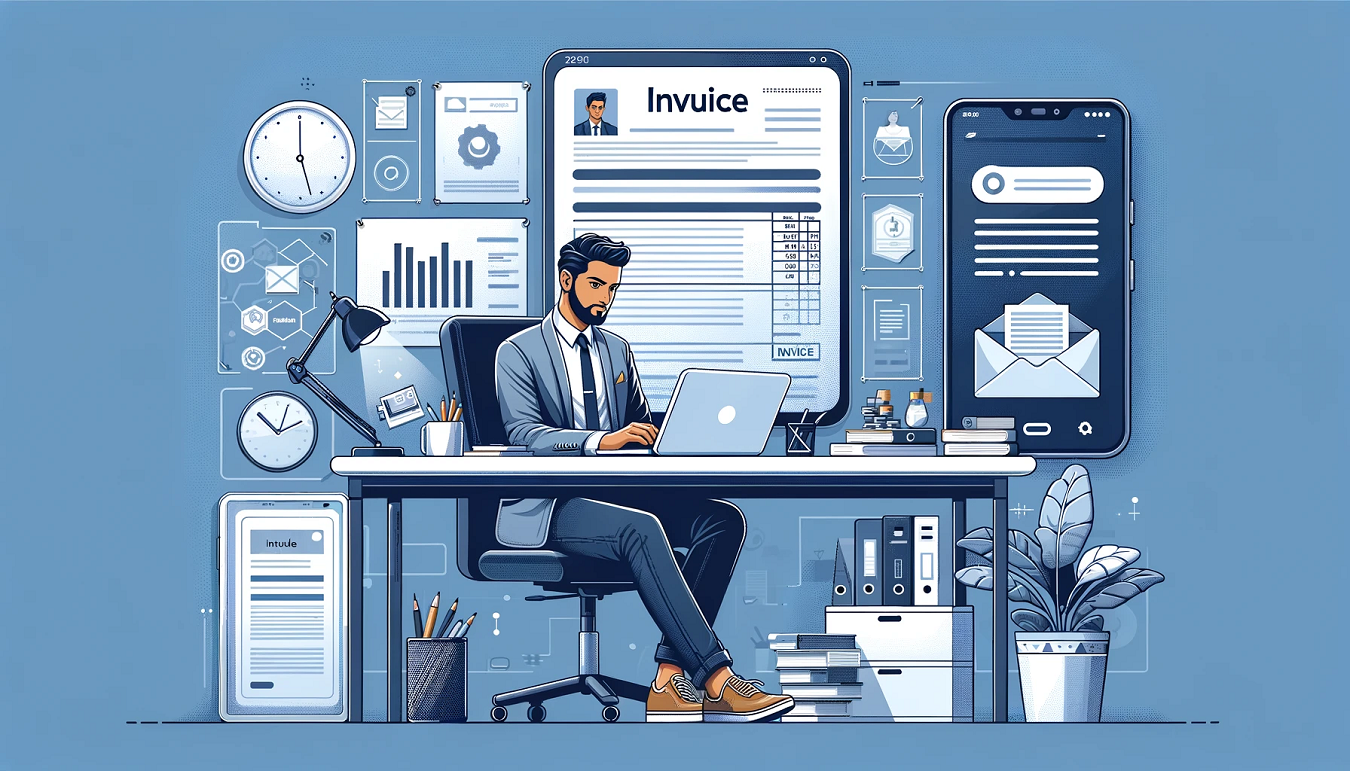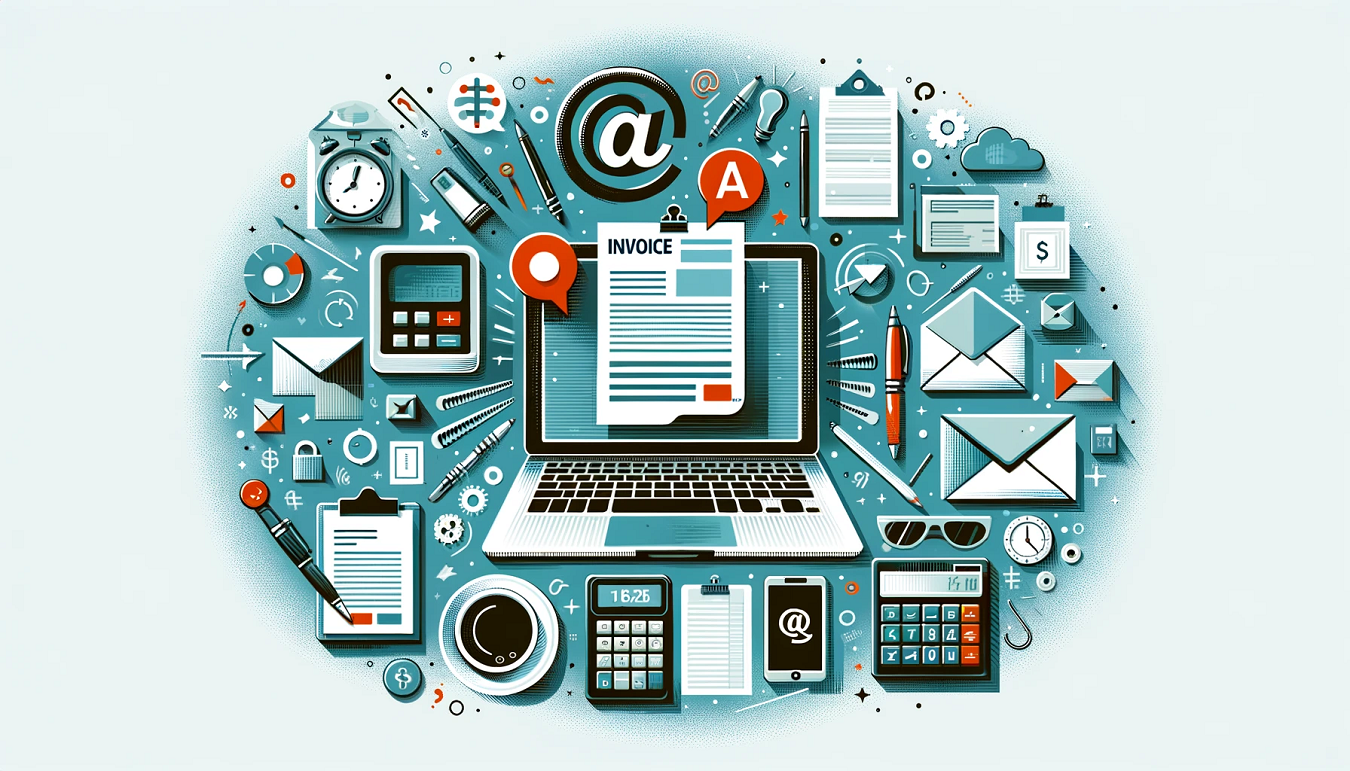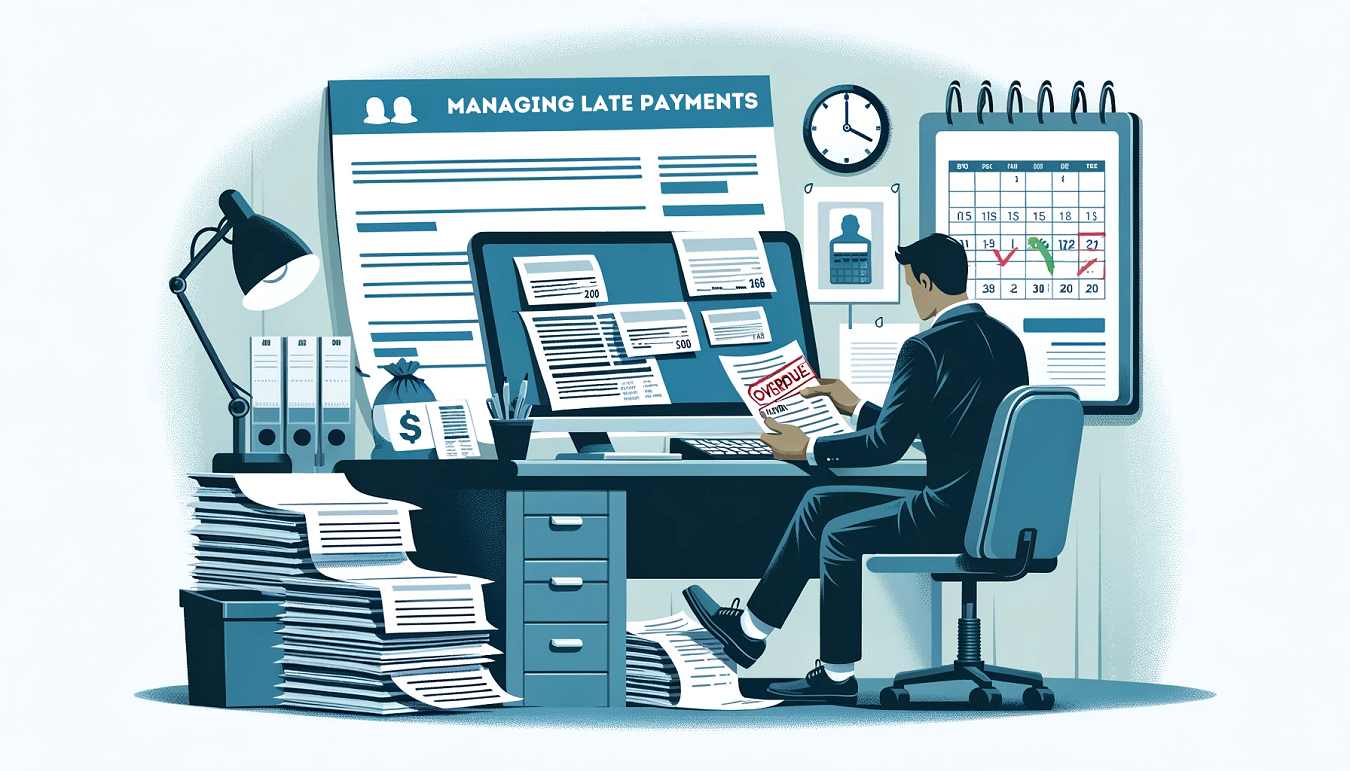

Navigating the world of professional billing can often seem like wading through a sea of paperwork and protocols, but it doesn’t have to be. With the right approach, you can make writing an invoice email an effective and efficient process. In this blog post, we’ll dive into the best practices for crafting an impeccable invoice email that stands out from the clutter. Learn how to present your business professionally and encourage prompt payments through our comprehensive guide filled with actionable advice and illustrative examples. Steer clear of confusion, ensure you are not left waiting for payment, and master this crucial aspect of money management now!

Writing an effective invoice email is essential for professional communication with clients. Our comprehensive guide provides step-by-step instructions and best practices, including tips on creating a clear subject line, using professional language, expressing gratitude, attaching the invoice as a PDF, and personalizing the message. By following these guidelines, you can ensure that your invoice email is concise, easy to understand, and encourages prompt payment from your clients.

When it comes to constructing an effective invoice email, simplicity and clarity should be your guiding principles. It’s essential to have an invoice email template that is straightforward and easy to understand. Using a template not only saves you time but also ensures consistency in communication. The language in your invoice email should be professional, simple, and avoid using jargon that may confuse the client. Remember, the goal is to clearly communicate the details of the transaction and ensure prompt payment.
Let’s imagine you are a freelance graphic designer sending an invoice email to a client for a recent project. Your invoice email should include a brief message thanking the client for their business, outline that you have attached an invoice for their review, and keep the email short and to the point. Avoid overwhelming the client with excessive information or unnecessary details.
Now that we understand the importance of constructing an effective invoice email, let’s move on to tailoring it specifically to our clients.
Every client is unique, and tailoring your invoice email to their specific needs can help strengthen your professional relationship. Personalizing your invoices helps create a connection with your clients and shows them that you value their business. So how can you tailor your invoice email?
Begin by using greetings that are appropriate for each client. Address them by name instead of generic salutations like “Dear Sir/Madam.” This small touch adds a personal touch and makes the interaction more engaging.
In addition to personalized greetings, consider including a brief message based on your past interactions or the nature of your working relationship with the client. For example, if you have recently completed multiple projects together, express appreciation for their continued trust in your services.
Furthermore, if you’re providing services within a specific industry or niche, adapt your language accordingly. Use terminology or references that resonate with your client’s field of expertise. This demonstrates your understanding of their business and helps build rapport.
Lastly, make sure to attach the invoice as a PDF file instead of including it in the body of the email. This ensures that the document maintains its formatting and is easy for the client to review and process.

When it comes to writing an informative invoice email, there are several essential elements that should be included to ensure clear communication and prompt payment. First and foremost, make sure to thank the client for their business and express your appreciation for their continued support. This sets a positive tone right from the start.
Next, provide a concise but comprehensive description of the work completed or services rendered. Clearly indicate whether you charge per project or time worked, and include your rate for transparency. Additionally, highlight any additional expenses that are not covered by the client’s initial payment.
To ensure clarity and avoid confusion, it is important to clearly state the due date for payment. This should be prominently mentioned in the email, along with any relevant terms or conditions regarding late payments or penalties.
One of the most critical aspects of an invoice email is articulating payment details clearly. Your client needs to understand exactly how much they owe and how to make the payment. To accomplish this:
By articulating payment details clearly in your invoice email, you minimize the chances of any misunderstandings or delays in payment.
When it comes to writing invoice emails, maintaining professionalism is of utmost importance. Your invoice email is not just a means to request payment; it is also a reflection of your business and how you handle client interactions. To ensure you convey professionalism, there are several best practices to keep in mind.
Firstly, it’s essential to have an invoice email template that is straightforward and easy to understand. Using a template saves time and ensures consistency in communication. The language in your invoice email should be professional, simple, and avoid using jargon that may confuse the client. Keep the email short and to the point, focusing on the necessary details.
Additionally, include a brief message thanking the client for their business. This small gesture shows appreciation and acknowledges their support. It’s also crucial to outline that you have attached an invoice for their reference and prompt action.
Using a descriptive subject line in your invoice email is key. Including the invoice number, product or service description, and the due date sets clear expectations from the beginning. This helps both you and your customer stay organized.
Lastly, personalize your invoice email with greetings and personalized messages to engage with the client. By personalizing the email, you create a connection and show that you value their business.
To illustrate how maintaining professionalism can be achieved in practice, let’s look at a couple of examples of well-crafted invoice emails:
Example 1:
Subject: Invoice ####12345 – Web Design Services – Payment Due November 30th
Dear [Client’s Name],
I hope this email finds you well. I want to express my gratitude for choosing our web design services to enhance your online presence. Enclosed is the invoice for the work completed as outlined in our agreement.
Please review the attached PDF document for details regarding the services provided along with any additional expenses incurred during the project. The total amount due is $[Amount]. We kindly request that payment be made by November 30th to ensure a seamless completion of our partnership.
Once again, thank you for choosing our services, and please do not hesitate to reach out if you have any questions or require further clarification. We appreciate your business and look forward to serving you in the future.
Sincerely,
Example 2:
Subject: Invoice ####98765 – Photography Services – Payment Due December 15th
Hello [Client’s Name],
I trust this email finds you doing well. I wanted to take a moment to express my gratitude for the opportunity to capture those precious moments during your recent photo shoot. Please find attached the invoice detailing the photography services rendered and any additional costs incurred.
Kindly review the enclosed PDF document for a breakdown of the charges. The total outstanding amount is $[Amount], which we kindly request that you settle by December 15th.
Thank you once again for choosing us as your photographer. If you have any questions or concerns regarding the invoice or require further assistance, please feel free to reach out. We value your business and are committed to providing exceptional service.
Warm regards,
These examples highlight the key elements discussed earlier, such as expressing gratitude, including a clear subject line, attaching a professional invoice in PDF format, and inviting open communication with the client.
Maintaining professionalism in business communication, specifically when sending invoice emails, can be achieved through a few key elements:
1. Express gratitude: Begin the email by expressing appreciation to the client for choosing your services or products.
2. Clear subject line: Use a subject line that includes the invoice number, a brief description of the services provided, and the payment due date. This helps the client quickly identify the purpose of the email.
3. Attach a professional invoice: Include a well-crafted invoice as a PDF attachment that clearly outlines the details of the services provided and any additional expenses incurred. This format ensures a professional presentation and ease of review for the client.
4. Specify payment due date and amount: Clearly state the total amount due along with a deadline for payment. This allows both parties to manage their finances effectively and ensures timely completion of the partnership.
5. Offer open communication: Encourage clients to reach out with any questions or concerns regarding the invoice or if they require further assistance. This demonstrates your commitment to providing exceptional service and fosters strong client relationships.
By incorporating these elements into your invoice emails, you can maintain professionalism, strengthen client relations, and ensure efficient payment processing.

Late payments can be a frustrating aspect of running a business. As a professional, it’s important to address these situations in a timely yet professional manner. When it comes to managing late payments in invoice emails, there are a few best practices to keep in mind.
Firstly, it’s crucial to approach the situation with diplomacy and courtesy. While it may be tempting to express frustration or urgency, maintaining a calm and professional tone will yield better results. Remember, your goal is to encourage prompt payment while preserving the client relationship.
Think of it as dealing with a late arrival at a dinner party. Instead of immediately expressing disappointment or irritation, you politely inquire about their journey and ensure they feel welcome despite the delay.
Secondly, your invoice email should clearly state the payment due date and emphasize the importance of meeting that deadline. This could be done by including the due date prominently in the subject line or by emphasizing it within the body of the email.
For example, you could say something like: “Please kindly note that payment for Invoice ####1234 is due by September 30th. Your prompt attention to this matter would be greatly appreciated.”
Additionally, consider including a brief but firm reminder about any late fees or penalties that may apply if payment is not received on time. This serves as a gentle nudge and may motivate clients to prioritize settling their outstanding balance.
“We kindly remind you that late payments may incur additional charges as per our terms of service. We value our relationship with you and believe that this reminder will help ensure smooth financial transactions moving forward.”
Lastly, maintaining open lines of communication is essential when managing late payments. In your invoice email, kindly offer assistance or provide contact information where clients can reach out if they are experiencing any difficulties or have concerns regarding the payment.
By showcasing empathy and offering support, you create an environment where clients feel comfortable discussing any challenges they may be facing. This can lead to a more collaborative and efficient resolution of payment issues.
In short, managing late payments in invoice emails requires a delicate balance of professionalism, assertiveness, and empathy. By approaching the situation with diplomacy, clearly communicating the payment due date, reminding clients about potential penalties, and maintaining open lines of communication, you can enhance the likelihood of receiving timely payments while nurturing positive client relationships.
How do I start an invoice email?
Begin your email invoice with a polite and professional greeting. Address the recipient by their name or title to maintain a personal touch. Ensure the tone is courteous yet straightforward, setting the stage for the details to follow.
What should be included in the subject line of an invoice email?
The subject line should be clear and informative. Include words like ‘Invoice [invoice_num] from [Your Company Name]’ to ensure immediate recognition and to avoid the email being overlooked in the recipient’s inbox.
How do I address the recipient in an invoice email?
Address the recipient directly by their name. If it’s a formal business relationship or a new client, use their title and last name. For ongoing clients, first names can be appropriate, depending on your rapport.
What information should be included in the body of an invoice email?
The body of your email should include a brief overview of the invoice details, such as the itemized list of goods or services provided, total amount due, and payment terms. Be clear and concise to avoid any confusion.
Should I attach the invoice as a file or paste it in the email body?
Attaching the invoice as a file (preferably PDF) is recommended for professionalism and ease of access. You can provide a brief summary of the invoice in the email body for quick reference.
How do I politely request prompt payment in an invoice email?
Use courteous language to request timely payment. Phrases like “We kindly request the payment by [due date]” are effective. It’s important to be respectful yet firm about your payment terms.
Is it necessary to include payment terms and due dates in an invoice email?
Yes, clearly state the payment terms and due dates. This transparency helps in maintaining a healthy cash flow and sets clear expectations for the client.
Should I provide any supporting documents along with the invoice email?
If relevant, attach supporting documents such as contracts, work orders, or detailed breakdowns. This provides clarity and can help expedite payment processes.
Are there any specific formatting guidelines for an invoice email?
Maintain a professional layout with your company logo, clear fonts, and an organized structure. Use email templates for consistency and efficiency. Ensure all necessary fields are filled accurately to avoid errors.
How can I follow up on an unpaid invoice through email?
Send a polite follow-up email, reiterating the invoice details and the due date. You can inquire if they encountered any issues with the payment process. For repeated delays, a firmer tone may be necessary.
For those managing numerous invoices, especially freelancers and agencies, using an invoicing software like Contractor+ can be a game-changer. It automates many steps in the invoicing process, from generating email templates to tracking unpaid invoices. Contractor+ offers a variety of tools that help maintain an efficient cash flow, reduce errors, and enhance credibility with clients. Whether you’re sending an invoice email to a client or following up on a past due payment, Contractor+ provides an array of customizable invoice email templates, integrating your business name, client name, contact details, and more, ensuring every email message upholds your brand’s integrity and professionalism. With Contractor+, the option for convenience and efficiency in invoicing is at your fingertips.